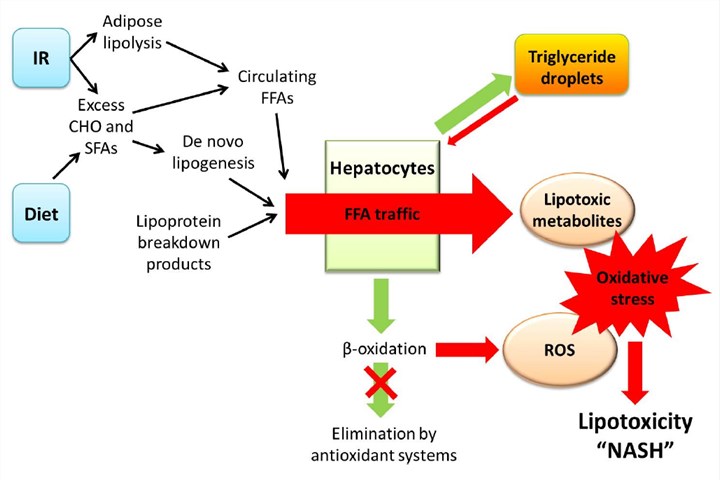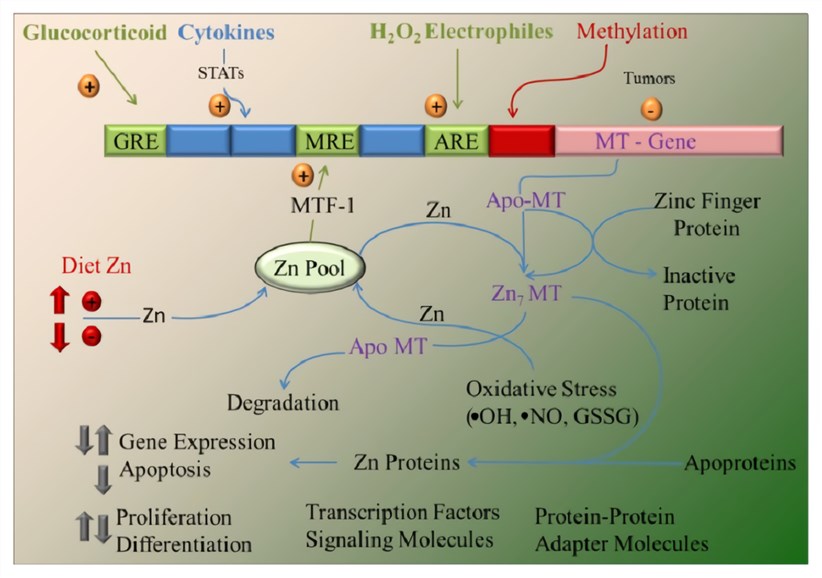Oxidative Stress Marker Development Service
Creative Biolabs provides a full range of services in custom biomarkers production by targeting oxidative stress pathways for non-invasive diagnosis of NASH. We are proud to offer the most comprehensive services list for NASH therapy.
Molecular Mechanisms of Oxidative Stress
Oxidative stress (OS) is one of the important factors in the pathophysiological mechanism of NASH. OS refers to the imbalance between the active substance and antioxidant (AO) defense production. Increased oxidative stress and impaired antioxidant defenses have been extensively documented in the progression phase of human non-alcoholic fatty liver disease and may lead to liver damage and the development of NASH. OS is caused by excessive production of reactive species (RS) or physiological redox steady state depletion. RS (reactive oxygen species, ROS; reactive nitrogen species, RNS) from the inflammatory response, the mitochondria, endoplasmic reticulum, and peroxisomes also contribute to the OS associated with NASH. Excessive ROS production is responsible for the oxidation of low-density lipoprotein (LDL), which promotes the conversion of macrophages to foam cells, representing the first step in the formation of atherosclerotic lesions.
 Fig.1 The lipotoxicity model of pathogenesis in NASH. (Peverill, 2014)
Fig.1 The lipotoxicity model of pathogenesis in NASH. (Peverill, 2014)
Biomarkers of Oxidative Stress for NASH Diagnosis
Several oxidative pathways may play roles in the overproduction of lipid peroxidation products in NASH patients, including enzymatic and non-enzymatic free radical mediated processes. Each of these pathways can produce different oxidation products that may be quantified. Many oxidative stress and antioxidant markers are used to assess the pathological state and progression of the disease. The levels of oxidized low-density lipoprotein and thiobarbituric acid reactive substances in NASH patients are found to be significantly elevated. Urine 8-isoprostane F2α (8-iso-PGF2α), derived from the non-enzymatic oxidation of arachidonic acid, is also found increased which can be a reliable and widely accepted reliable biomarker for oxidative stress in health and disease.
Moreover, metallothionein (MT)-1/2 is a novel stress-inducing biomarker in NASH, which is one of the major protective biomarkers of oxidative stress in the liver and regulated by nuclear factor erythroid 2-related factor 1 (Nrf2). Induction of MT by lipid peroxidation in response to free radicals are formed in tissues. The location of MT-1/2 is mainly in the cytoplasm of hepatocytes, and histological damage is mainly observed in NASH. The negative correlation between MT-1/2 expression and the degree of necroinflammation indicates that lipid peroxidation is involved in the necrotic inflammatory response in NASH, which is associated with a decrease in MT-1/2 concentration. Therefore, lipid peroxidation associated with reduced MT-1/2 concentrations may be a partial cause of the pathological features observed in NASH. In addition, other oxidative stress biomarkers including nitric oxide (NO), lipid damage products (lipid peroxides, TBARS (MDA), hydroperoxides, 8-isoprostane, 4-HNE), protein oxidation products (protein carbonyl, nitrotyrosine), DNA oxidation products (8-OH-dG) and CYP2E1, also have great potential for non-invasive diagnosis of NASH.
 Fig.2 Overview of MT gene regulation and function. (Ruttkay-Nedecky, 2013)
Fig.2 Overview of MT gene regulation and function. (Ruttkay-Nedecky, 2013)
The biomarkers are usually identifiable or measurable in the blood, urine or other convenient body fluids by PCR, ELISA, and other conventional immune assays. In order to improve the value of these diagnostic tools and help clinicians in the diagnosis, prognosis, and staging of NASH, Creative Biolabs now provides customized services (e.g. Phage Display & Antibody Library, Antibody Analysis, Antibody Engineering) to produce high-quality biomarkers of diagnostic use. If you have any special needs in NASH services, please feel free to contact us for more details.
References
- Peverill, W.; et al. Evolving concepts in the pathogenesis of NASH: beyond steatosis and inflammation. International journal of molecular sciences. 2014, 15(5): 8591-8638.
- Ruttkay-Nedecky, B.; et al. The role of metallothionein in oxidative stress. International journal of molecular sciences. 2013, 14(3): 6044-6066.
 For Research Use Only.
For Research Use Only.